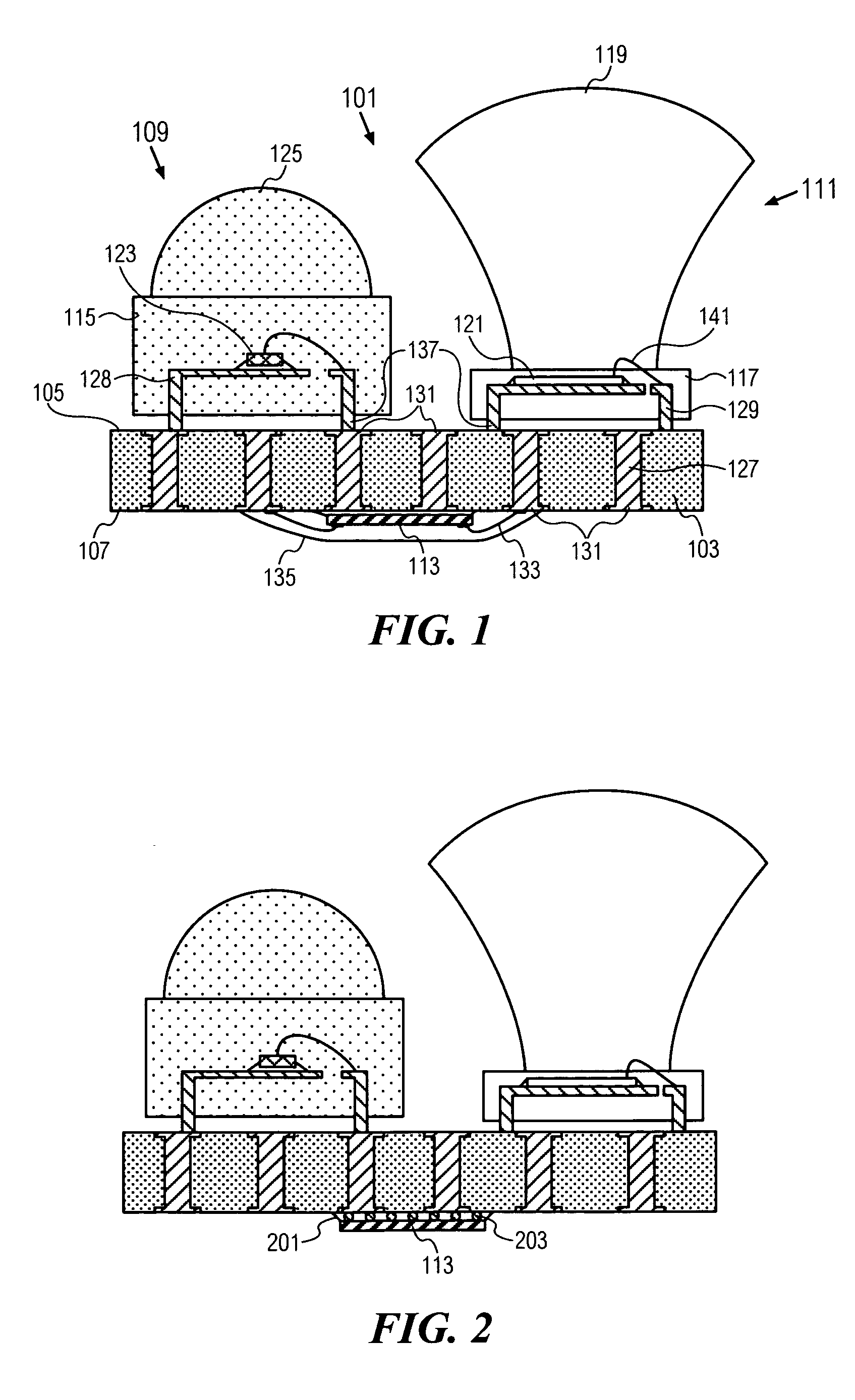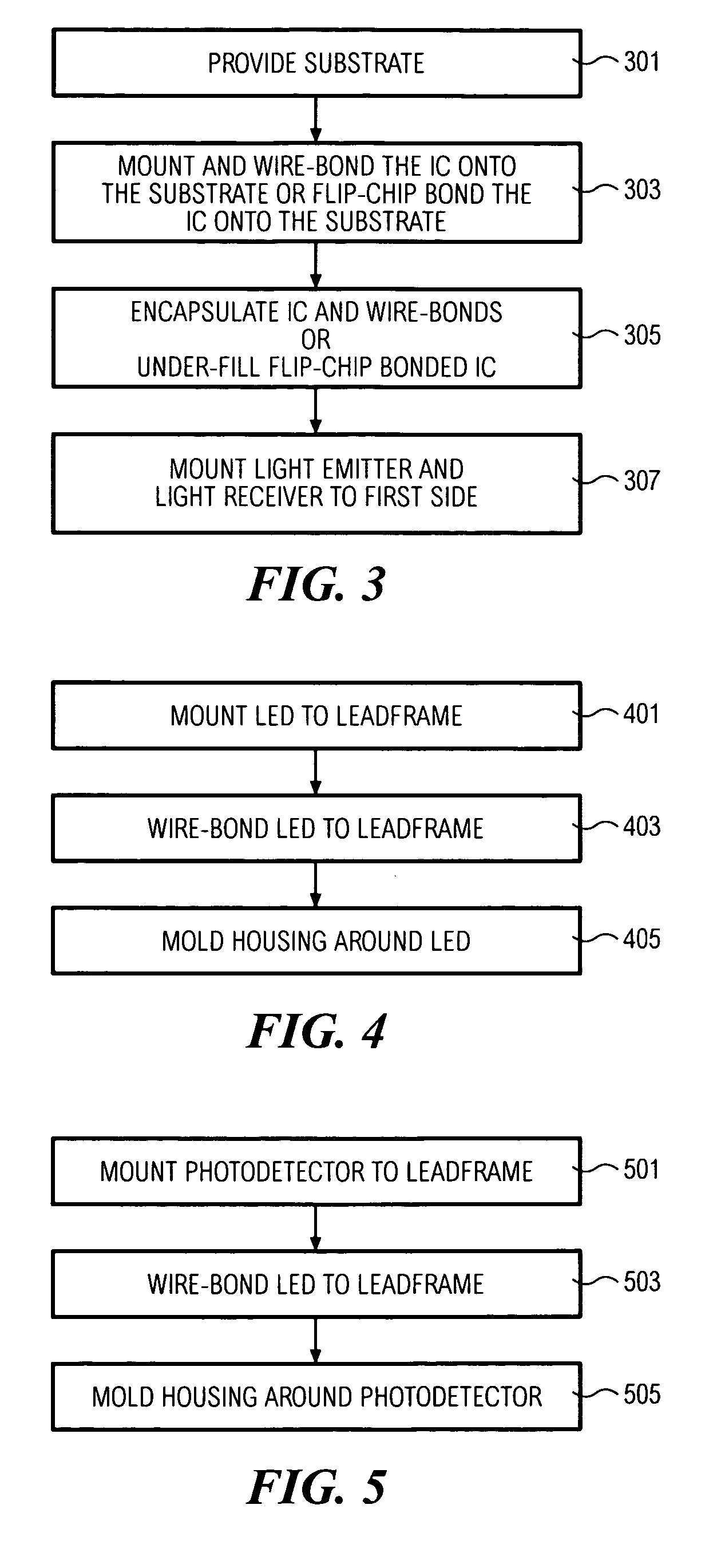Compact optical transceiver module
- Summary
- Abstract
- Description
- Claims
- Application Information
AI Technical Summary
Benefits of technology
Problems solved by technology
Method used
Image
Examples
Embodiment Construction
[0020]FIG. 1 shows an optical transceiver 101. A substrate 103 has a first side 105 and a second side 107. A light emitter 109 and a light receiver 111 are mounted to the first side 105. The light emitter 109 and light receiver 111 can be mounted to the first side 105 by means of leadframes 128, 129, respectively. Amplification circuits 113 are mounted to the second side 107 and are electrically connected to the light emitter 109 and the light receiver 111 through electrical terminals 127 passing through the substrate 103. The amplification circuits 113 drive the light emitter 109 to generate an output signal and also amplify the input signal received by the light receiver 111.
[0021] By mounting the light emitter 109 and light receiver 111 on the opposite side of the substrate 103 relative to the amplification circuits 113, the optical transceiver 101 has a smaller footprint than the transceiver of Rosenberg where the emitter, receiver and IC are all mounted on the same side of the...
PUM
 Login to View More
Login to View More Abstract
Description
Claims
Application Information
 Login to View More
Login to View More - R&D
- Intellectual Property
- Life Sciences
- Materials
- Tech Scout
- Unparalleled Data Quality
- Higher Quality Content
- 60% Fewer Hallucinations
Browse by: Latest US Patents, China's latest patents, Technical Efficacy Thesaurus, Application Domain, Technology Topic, Popular Technical Reports.
© 2025 PatSnap. All rights reserved.Legal|Privacy policy|Modern Slavery Act Transparency Statement|Sitemap|About US| Contact US: help@patsnap.com



